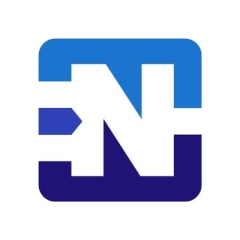What is our primary use case?
I use it for my firewall at home and when virtualizing labs to do routing between different network segments. I use it in the business that I am currently with at our main office and our other site. I worked at an MSP before that, and it was the firewall that we recommended to clients who wanted to go beyond what you'd buy at Best Buy, like the random Linksys or Netgear. I haven't touched the enterprise level, like the expensive ones where you might have 20 different Netgate segments with failover.
We deploy it either on bare metal or virtualized on our own virtualization platform. We have not deployed it on any cloud. The primary cloud services we use are software as a service, so our firewall doesn't apply to that. If we ran our own set of servers in the cloud somewhere, we'd probably consider pfSense for routing between them, but we don't have that use case.
How has it helped my organization?
When I started using it back in the day, someone told me that there's this firewall you can install on an old PC to get all these features that are normally only available on expensive enterprise firewalls.
I realized the benefits immediately. When I installed it, I had access to features like multi-WAN, which is more common now. You can get small home office routers with multi-WAN these days, but when I started a decade ago, it cost thousands of dollars and required enterprise equipment. It was mind-blowing that I installed it and could hook up two Internet connections for no extra money.
It doesn't directly prevent data loss because pfSense doesn't have a DLP function, but the security aspects, like the pfBlocker, ClamAV plugin, and proxy, are all great. The security components help prevent data loss by securing the network. As far as I know, pfSense doesn't have a data loss prevention function that scans for somebody trying to exfiltrate data.
The failover or load-balancing WAN helps reduce downtime. It also supports high availability between two firewalls, although I've never set that up. Those would minimize downtime of the firewall individually and the company as a whole.
We don't use it that way, but it has extensive logging. If you were to dump all those logs into something like Graylog, Elasticsearch, etc., you could analyze and decide based on that data. We don't use it like that, but I know that with the extensive logging that it has, it could be used that way.
PfSense has an excellent ability to optimize performance, especially with the plugins. It helps me determine where my bandwidth is going and get reports on latency, jitter, etc. I use all of these features regularly. If the internet is slow, I can go see who's hogging it by downloading giant files, or I can identify where there's a lot of latency on a particular gateway.
What is most valuable?
I like that there's a community edition that I can install on my own virtual machines or hardware. I can test things without messing with them in production, which is incredibly useful. If you have a Juniper or Cisco, you can typically only afford one.
You're forced to make changes in production and hope they don't break anything because there's no easy way to have a testing environment. The free version of pfSense offers load balancing or failover WAN, which is also helpful. Most commercial firewalls don't have that in the cheapest iteration of the hardware.
The community edition makes it easy to learn because you can try it before buying it and putting it in production. There's no equivalent if you want to buy FortiGate, WatchGuard, or any of those and fiddle with them on your hardware before putting it in production.
Many plugins for pfSense are easy to install off the store, and they work. The basic function that you want to do are pretty easy. However, it is more complicated than your average home office router, but that's to be expected. The fact that it is an open-source project that's trying to be all things to all people does mean that sometimes things can get a little bit complex, sometimes unnecessarily. For example, the IPSec VPN setup has five hundred options, probably more than anyone needs, but it works. Their documentation is excellent. In instances where you might not figure it out on your own or the interface might not be super clear on how to do something, the documentation is usually good 99 percent of the time.
I appreciate pfSense's flexibility. I can buy supported hardware from Netgate with it already on there, buy support for my own hardware, or run the community edition on my own hardware or a virtual machine and get all of the same functionality.
What needs improvement?
Snort or Suricata don't block things they should out of the box. It's always been a pain point of pfSense. If you turn on Snort or Suricata for IPS or IDS, no setting is effectively set and forget. Turning any commercial firewall to the lowest setting will provide you with a decent amount of security with almost zero false positives, but pfSense is not that way. You've got a babysit Snort and Suricata to the point where sometimes you turn it off.
I know one of their rising competitors, OPNsense, has the ETS rules. I forget who provides it, but you turn on a rule set, and they just work. They have a built-in set of rules for Snort and Suricata that you turn on and it provides a reasonable amount of security. That has always been a pain in the neck with pfSense. It's the single biggest thing that they could do to improve it. Honestly, they're losing business OPNsense for that one reason.
For how long have I used the solution?
I have used pfSense for at least 10 years.
What do I think about the stability of the solution?
As long as you don't use bad hardware, it's fine. PfSense has issues with some Realtek network chips. If you use bad hardware and get bad results, it's your own fault. I usually have as much uptime as there is between patches. It's highly solid after reboot other than installing the most recent patch.
What do I think about the scalability of the solution?
I've never used pfSense at the high-end enterprise scale, but it can scale nearly infinitely as far as I can tell. There's a higher-level pfSense that's carrier grade that can handle hundreds of gigabit routing. We've got a Netgate plan and never had any problems.
We see solid performance no matter what we're running on it. The fact is that it can run on a low-end, low-power fanless ARM CPU for a branch office. PfSense is usable in a lot of situations. It's also extremely scalable, which is also flexible in the sense that you can install it on some random old PC that you have at your house and use it for your home firewall. You can also use it in an enterprise with a multi-gigabit incoming connection and thousands of clients.
How are customer service and support?
I rate Netgate support nine out of 10. I have contacted them a couple of times over the years. Each time I called them, they solved my problem or gave me a workaround within a reasonable time. It seemed like the people I talked to knew what they were doing. Sometimes, you call technical support and end up with first-level tech support who reads off a script. They don't listen to a word that you say and tell you to do all the things you've already done.
I've been able to get people who ask pertinent questions and ask for logs. They remote into my machine or SSH into the firewall, so I'm happy with it. It was worth the money that we paid when we needed it.
How would you rate customer service and support?
Which solution did I use previously and why did I switch?
I have used Smoothwall and OPNsense. Back then, I used to have a weird firewall that I can never remember. If you count OpenWRT, a replacement firmware for Linksys, as a firewall. However, you can't install it on any x86 OS that you want.
How was the initial setup?
It depends on whether the user is familiar with general concepts like putting an ISO on a flash drive and booting off of it using some basic command line. It's very easy if they've installed operating systems before and understand how to boot off a flash drive. Flash the image to a flash drive and boot off it, then follow the prompts. If they don't have that basic experience, I wouldn't tell them to deploy it themselves. I'd tell them to buy a box from Netgate with support.
That can be tricky if you've never done it or don't understand the concept of moving off of a flash drive and installing an OS. There's not anything Netgate can do about that because there are thousands of different pieces of hardware you can try deploying pfSense to, and pfSense can't give specific detailed instructions for every one of them. That's when you go buy Netgate.
The first time, it took me days because I had no idea what I was doing. Now, I can set up a pfSense with good basic functionality in an hour. It doesn't take very long. I've probably done it hundreds of times now.
After deployment, you've got to install patches periodically. If you're using Snort or Suricata, you've got to pay attention to those. If you're using pfBlocker, you've got to install patches. If you're not using any of the plugins like Snort, Suricata, pfBlocker, Grid, or any of those sorts of things for advanced functionality, then there isn't any maintenance other than periodically installing your patches like anything else.
What's my experience with pricing, setup cost, and licensing?
The community edition provides all of the basic functions for free on your own hardware, and pfSense Plus comes with a Netgate appliance. It's a reasonable $200 bucks or so to buy pfSense for your hardware, and then it's $800 or $900 a year for commercial support, which is also reasonable for a firewall.
It's hard to gauge the total cost of ownership because there's a free, open-source version that, if you know a lot about pfSense already, it's almost zero cost. You can run it on any old hardware you've got. If you need support and multi-gigabit IPSec WAN speeds, you'll need to pay for that, but you will with anybody.
What other advice do I have?
I rate Netgate pfSense eight out of 10. They could polish up a few things, especially regarding IDS/IPS rules. A few interface things are a little more complicated than necessary.
If you're moving to pfSense from a random Linksys or Netgate router, you need to realize it will be more difficult, and you'll need to learn more about networking concepts than you necessarily had to do with the random router that you've got. It's more complicated like that.
That's to be expected because you're either a techie kind of person who thinks building your own firewall is fun, and they're willing to spend the time and effort to learn it. Or you want an alternative to FortiGate, Juniper, or whatever, and you want to buy a commercial Netgate product. This is going to be more complicated than the Linksys router I bought for $80 dollars from Best Buy.
Disclosure: PeerSpot contacted the reviewer to collect the review and to validate authenticity. The reviewer was referred by the vendor, but the review is not subject to editing or approval by the vendor.















